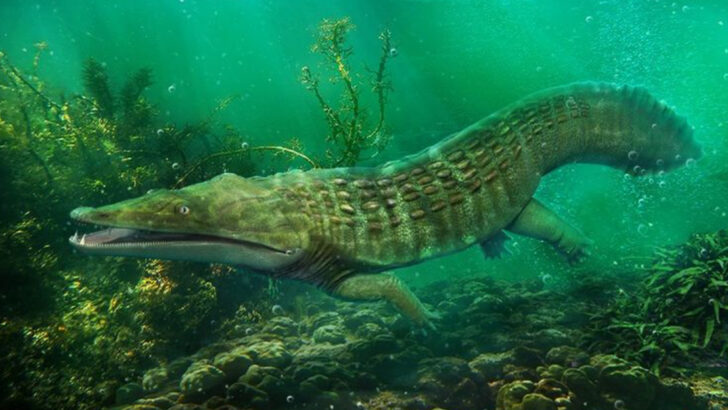Amphibians weren’t always the small, slippery creatures we see today. Millions of years ago, they were giants, hunters, and survivors of a world far more dangerous than our own. Some had boomerang-shaped heads, others looked like crocodiles, and a few were so massive they could swallow smaller creatures whole.
These lost giants once ruled prehistoric swamps, lakes, and rivers. They hunted in murky waters, ambushed prey from the depths, and even challenged early reptiles for dominance. Some helped bridge the evolutionary gap between fish and land-walking animals, shaping the course of life on Earth.
Now, their fossils are all that remain, whispering stories of ancient battles and evolutionary leaps. From armored giants to bizarre, flat-headed lurkers, these 20 extinct amphibians weren’t just strange—they were game-changers. Let’s meet the creatures that time left behind.
Beelzebufo ampinga
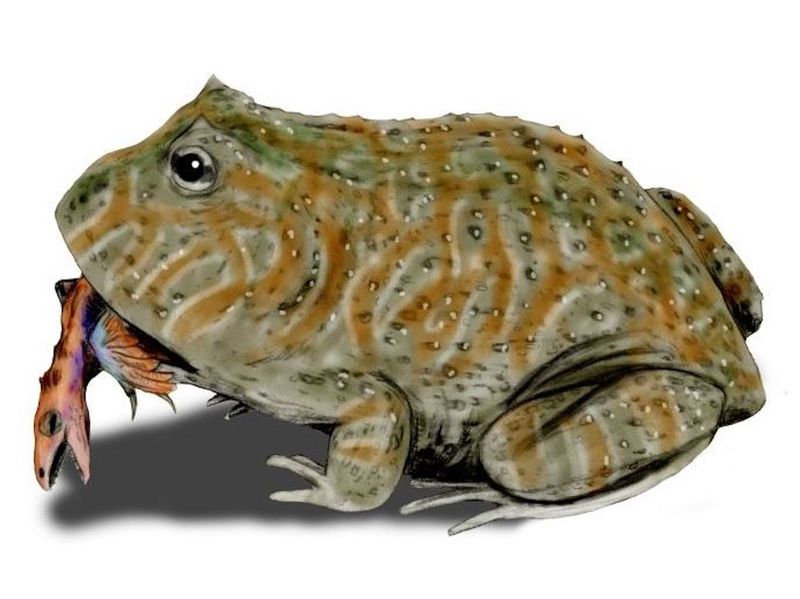
Beelzebufo ampinga, often referred to as the “devil frog,” was a colossal amphibian that once roamed Madagascar around 70 million years ago. Resembling an oversized modern-day frog, it possessed a wide mouth and robust limbs, adapting to life as an apex predator. This ancient creature’s unique anatomy suggests it was capable of preying on small dinosaurs, reflecting a diverse Cretaceous ecosystem. The study of Beelzebufo provides valuable insights into the adaptability and ecological roles of ancient amphibians, emphasizing their importance in prehistoric food chains. Its discovery underscores the dynamic evolutionary history of amphibians, illustrating the ecological diversity they once exhibited.
Gerrothorax pulcherrimus
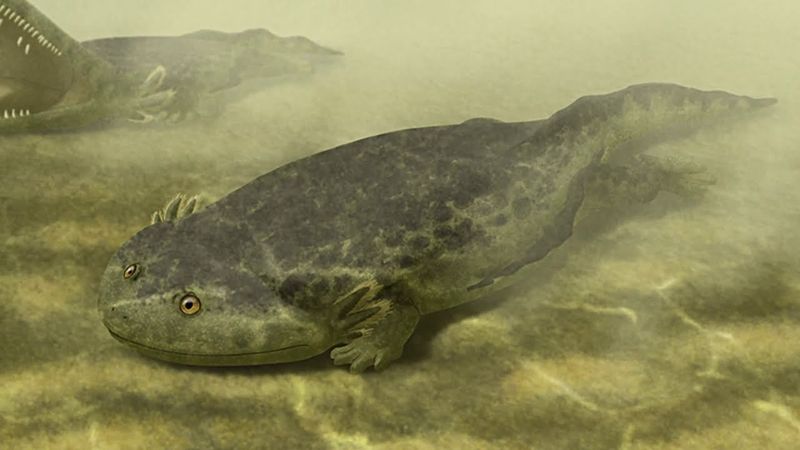
Gerrothorax pulcherrimus was a peculiar amphibian from the Triassic period, characterized by its flat body and wide, elongated head. Found in what is now Europe, this species exhibited unique features that set it apart from contemporaries. Its broad, flattened body allowed it to ambush prey from riverbeds, a testament to its specialized hunting techniques. The anatomical adaptations of Gerrothorax highlight the diverse evolutionary paths amphibians have taken. Studying such species helps us understand the ecological niches ancient amphibians occupied, revealing the rich tapestry of life that existed in prehistoric aquatic environments.
Diplocaulus magnicornis
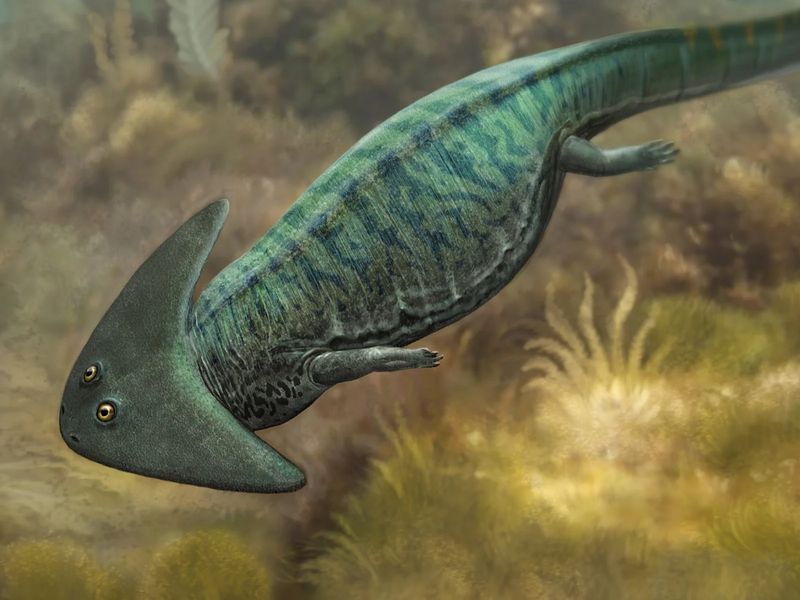
Diplocaulus magnicornis was an extraordinary amphibian known for its distinctive boomerang-shaped skull, which likely played a role in its swimming dynamics. This Permian-era creature inhabited vast swampy areas, showcasing an unusual adaptation among amphibians. Its head shape may have deterred predators or assisted in navigating aquatic environments. Studying Diplocaulus provides insight into the morphological diversity and evolutionary strategies of ancient amphibians. By examining such unique anatomical features, researchers gain a better understanding of how amphibians adapted to their environments, emphasizing their evolutionary flexibility and the varied ecological roles they played.
Eryops megacephalus
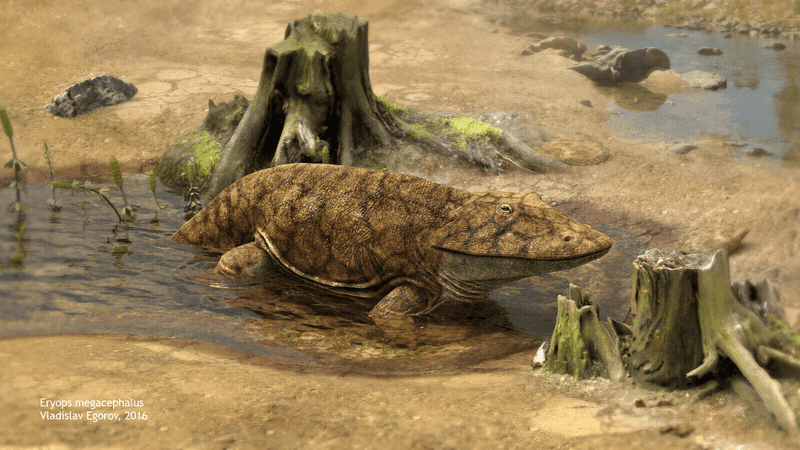
Eryops megacephalus was a dominant amphibian from the Carboniferous period, known for its sturdy build and powerful jaws. This large amphibian was well-suited for a semi-aquatic lifestyle, preying on fish and other small animals. Its strong limbs and large teeth were perfectly adapted for hunting both in water and on land. The study of Eryops sheds light on the evolutionary transition from aquatic to terrestrial life, offering valuable insights into early amphibian adaptations. Through such discoveries, we learn about the crucial roles these creatures played in their ecosystems and their impact on evolutionary history.
Koolasuchus cleelandi
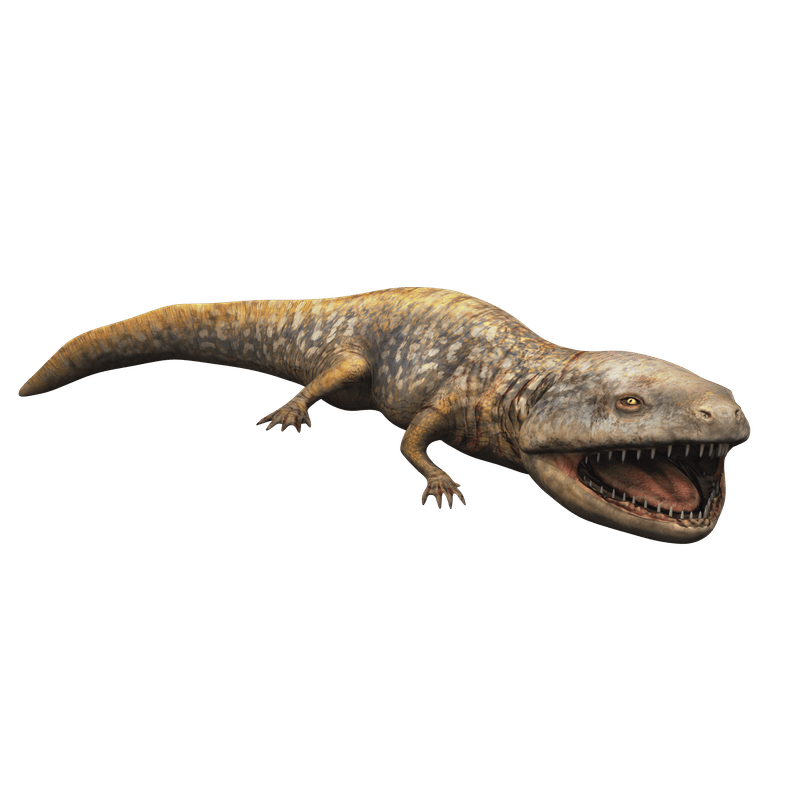
Koolasuchus cleelandi, an imposing amphibian from the Cretaceous period, was a unique inhabitant of what is now Australia. This species was distinguished by its broad head and flat body, which aided in its aquatic lifestyle. As one of the largest known amphibians of its time, Koolasuchus was a formidable predator in its riverine habitat. Its evolutionary adaptations provide insight into the ecological dynamics of Cretaceous waterways. Studying this species illustrates the diversity of prehistoric amphibians and their varied roles within ancient ecosystems, highlighting the evolutionary paths that have influenced modern amphibian diversity.
Cacops aspidephorus
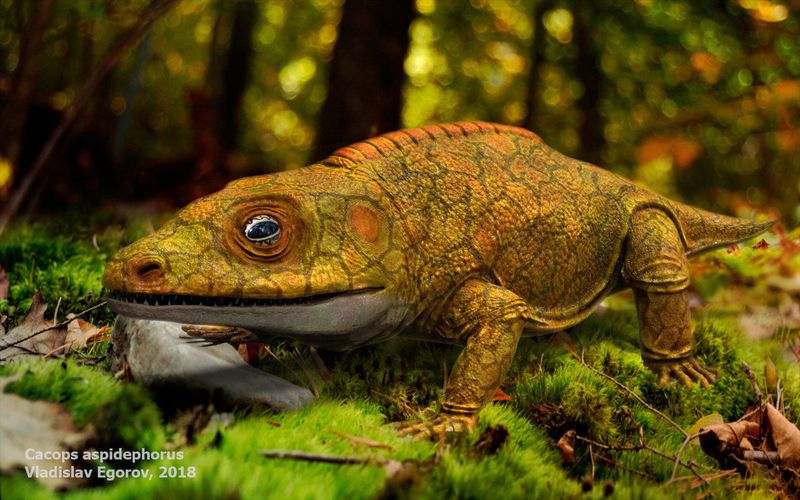
Cacops aspidephorus, a sturdy and armored amphibian, lived during the Permian period, showcasing adaptations that allowed it to thrive in terrestrial environments. Its heavily armored body provided protection from predators, while its robust limbs supported movement across forest floors. This species highlights the evolutionary innovations amphibians developed to transition from aquatic to land-based habitats. By studying Cacops, researchers gain insight into the challenges and adaptations faced by early terrestrial vertebrates. These findings underscore the complex evolutionary history of amphibians and their pivotal roles in shaping terrestrial ecosystems.
Crassigyrinus scoticus
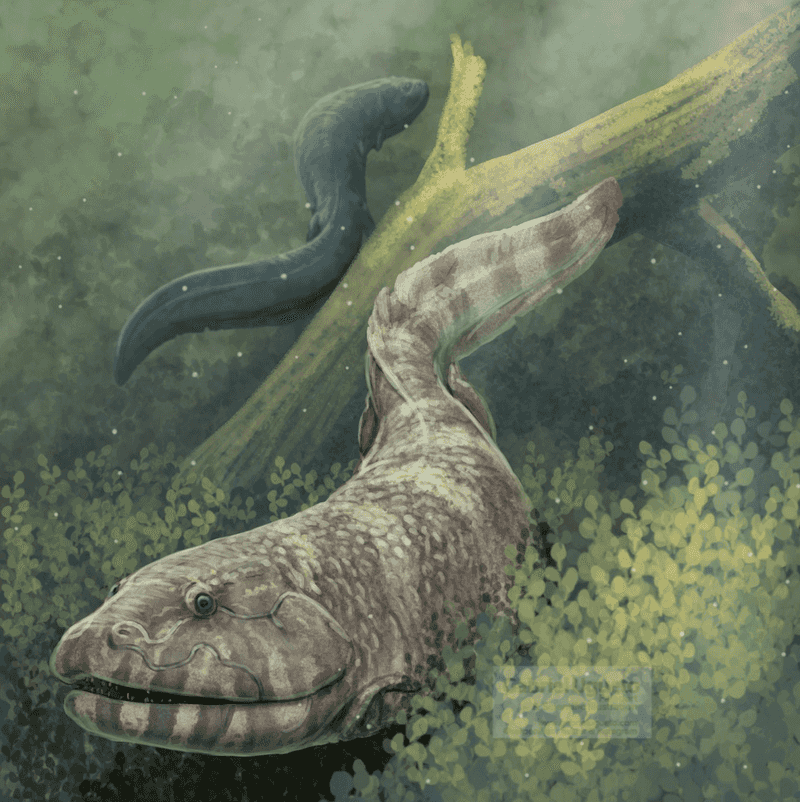
Crassigyrinus scoticus was an intriguing amphibian from the Carboniferous period, characterized by its elongated body and small, underdeveloped limbs. This anatomy suggests a primarily aquatic lifestyle, navigating through the muddy swamps of ancient Scotland. The peculiar form of Crassigyrinus provides insights into the diverse evolutionary strategies of amphibians. Its adaptations reflect a life adapted to aquatic environments, showcasing the range of niches these creatures occupied. Studying this species enhances our understanding of amphibian evolution and the environmental pressures that shaped their development, offering a glimpse into the complex history of life on Earth.
Batrachosuchus browni
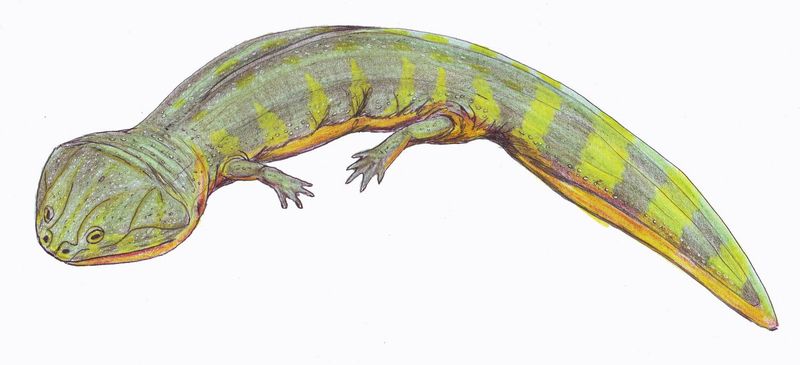
Batrachosuchus browni was an amphibian with crocodile-like features, including a long snout and powerful tail, indicative of its riverine lifestyle during the Triassic period. This species highlights the convergent evolutionary traits shared with reptiles, emphasizing the adaptability of amphibians. Batrachosuchus’s anatomy allowed it to be an effective predator, navigating through aquatic environments with ease. By examining such species, researchers gain insight into the evolutionary pathways and ecological roles that amphibians have taken. This study enriches our understanding of the evolutionary history and adaptability of ancient amphibian species, underscoring their significance in prehistoric ecosystems.
Proterogyrinus scheelei
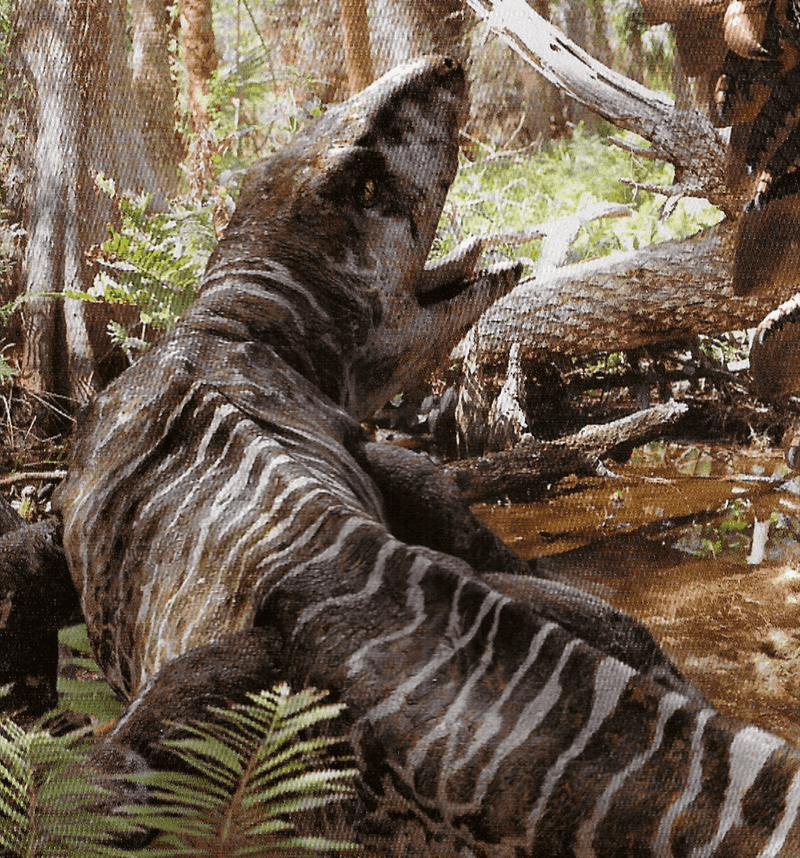
Proterogyrinus scheelei was a prominent amphibian from the Devonian period, with a lizard-like appearance and robust limbs. Living primarily on forest floors, this species exemplifies the transitional phase of amphibians moving from aquatic to terrestrial habitats. Its strong, limb-driven locomotion highlights evolutionary developments crucial for life on land. Studying Proterogyrinus sheds light on the significant adaptations that facilitated this transition. By examining such species, researchers better understand the evolutionary steps amphibians undertook, offering glimpses into the diverse evolutionary history that has shaped modern terrestrial vertebrates.
Peltobatrachus pustulatus
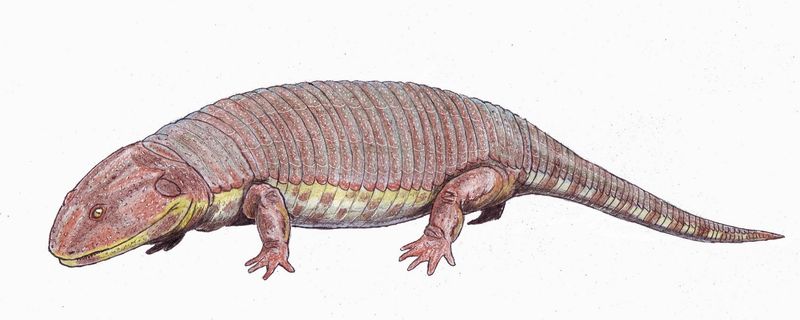
Peltobatrachus pustulatus, a small amphibian from the Permian period, was known for its distinctive bumpy skin and bright coloration. Its unique appearance likely played a role in communication or mating displays within the humid jungles it inhabited. This species illustrates the varied adaptations amphibians have developed to thrive in diverse environments. By studying Peltobatrachus, we gain insights into the evolutionary pressures and environmental conditions that influenced amphibian diversity. This knowledge helps researchers piece together the intricate evolutionary history of amphibians, highlighting their adaptive capabilities and ecological significance in prehistoric times.
Metoposaurus diagnosticus
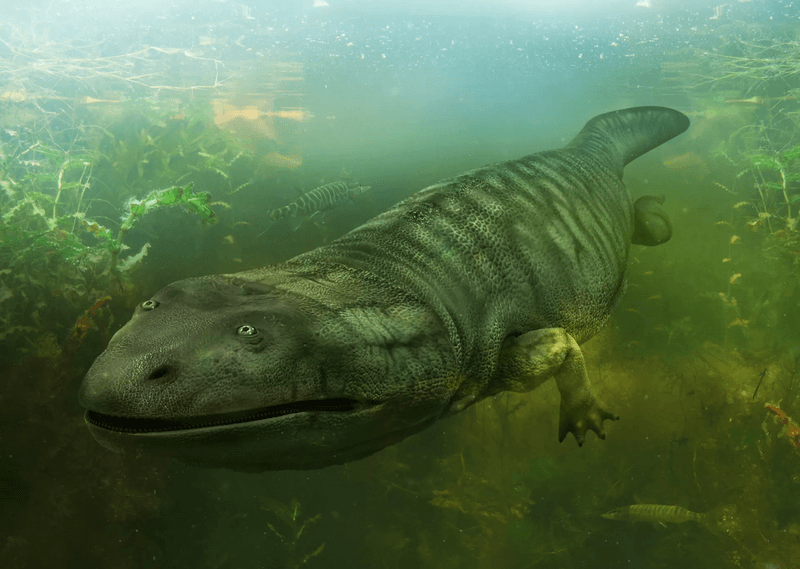
Metoposaurus diagnosticus was a large amphibian from the Triassic period, resembling a giant salamander with its broad head and robust body. This species thrived in aquatic environments, often found near lakes and riversides. Its anatomy suggests a lifestyle focused on ambushing prey, utilizing its powerful jaws. Studying Metoposaurus provides insights into the ecological roles amphibians played in prehistoric ecosystems. By examining such creatures, researchers gain a better understanding of the evolutionary trajectories that have shaped the diversity and adaptive strategies of amphibians, illustrating their significant contributions to ecological dynamics.
Sclerocephalus haeuseri
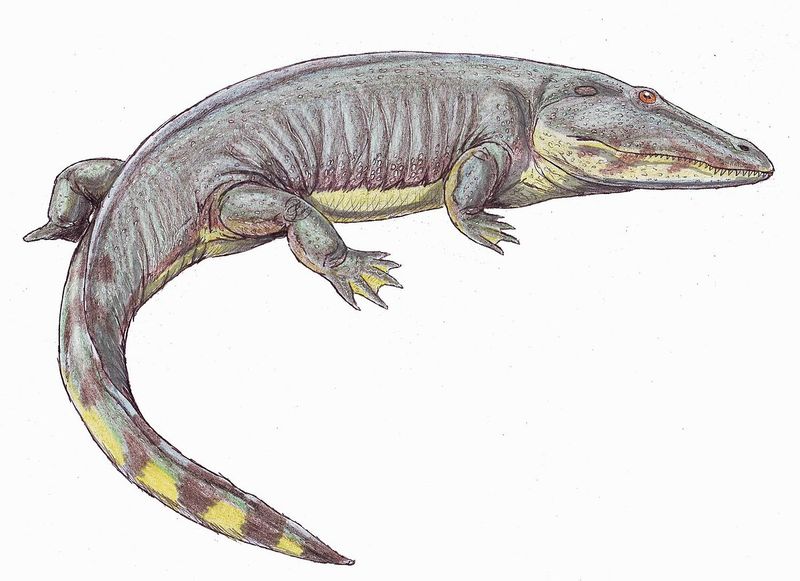
Sclerocephalus haeuseri, from the Permian period, was a medium-sized amphibian known for its broad skull and sturdy build. This species inhabited marshy environments, indicative of its semi-aquatic lifestyle. Its robust anatomy suggests a diet of both aquatic and terrestrial prey, highlighting its ecological versatility. Studying Sclerocephalus helps researchers understand the evolutionary adaptations that allowed amphibians to exploit various ecological niches. These findings contribute to our knowledge of amphibian evolution, illustrating the diversity and adaptability of ancient species as they navigated the challenges of prehistoric ecosystems.
Platyoposaurus stuckenbergi
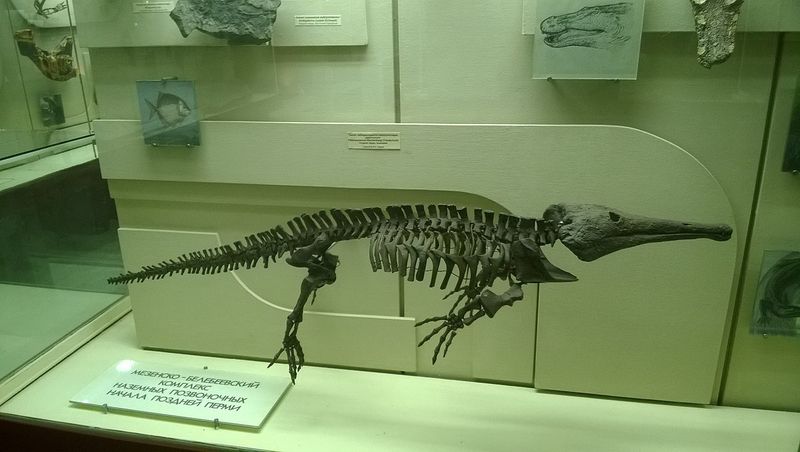
Platyoposaurus stuckenbergi was an amphibian from the Carboniferous period, notable for its large size and flat head. Its streamlined body suggests adaptations for efficient movement in aquatic environments, such as swamps and rivers. The distinct morphology of Platyoposaurus provides insights into the evolutionary paths amphibians have taken to optimize their aquatic lifestyles. By studying such species, researchers can better understand the environmental pressures that shaped amphibian evolution, highlighting their adaptability and the diverse ecological roles they played in ancient ecosystems. These findings enrich our understanding of amphibian diversity and evolution.
Saharastega moradiensis
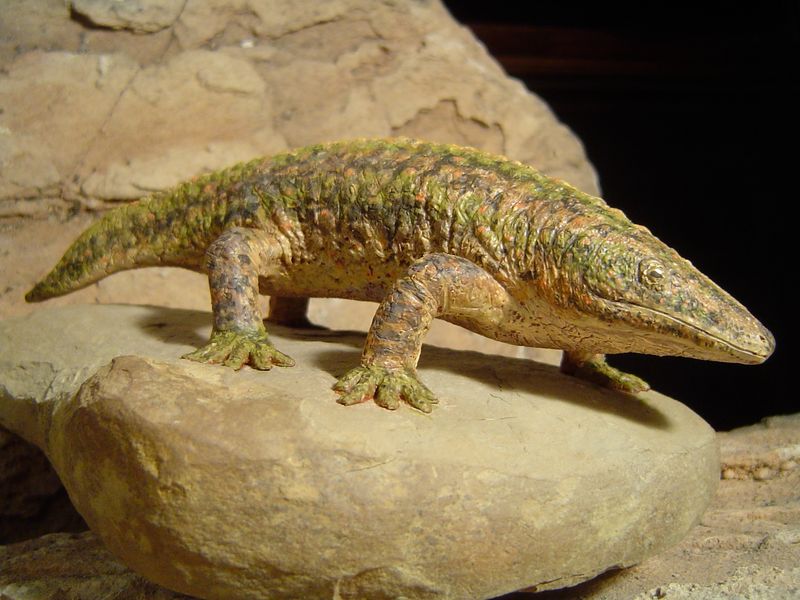
Saharastega moradiensis was a small, stocky amphibian from the Permian period, characterized by its short snout and robust build. This species inhabited what is now Africa, navigating diverse terrestrial landscapes. Its anatomical features suggest adaptations for a predominantly land-based lifestyle, offering insights into the evolutionary shifts amphibians underwent. By studying Saharastega, researchers gain valuable understanding of the adaptations necessary for life in varied environments. These findings contribute to the broader picture of amphibian evolution and the diverse ecological roles these creatures have played throughout history, demonstrating their resilience and adaptability.
Siderops kehli
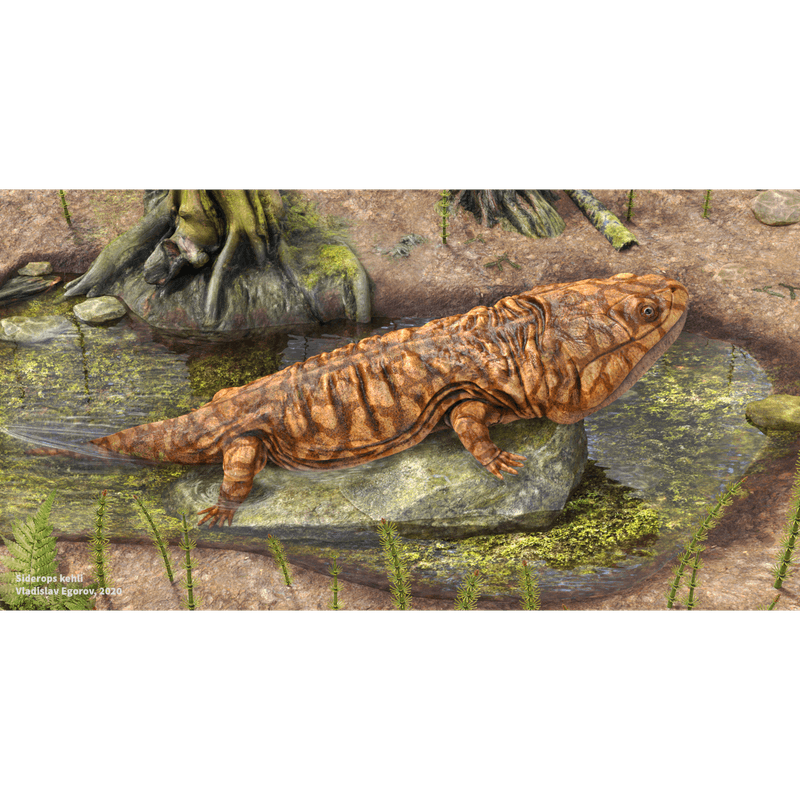
Siderops kehli, from the Jurassic period, was a large amphibian distinguished by its armored body and crocodilian appearance. This species thrived in riverine environments, utilizing its robust anatomy to prey on aquatic life. The adaptations of Siderops illustrate the evolutionary parallels between amphibians and reptiles, highlighting convergent evolutionary strategies. By examining this species, researchers can better understand the diverse evolutionary pathways amphibians have traversed. These insights contribute to our knowledge of amphibian diversity and adaptability, underscoring their significant roles in shaping prehistoric ecosystems and the evolutionary history of vertebrates.
Trimerorhachis insignis
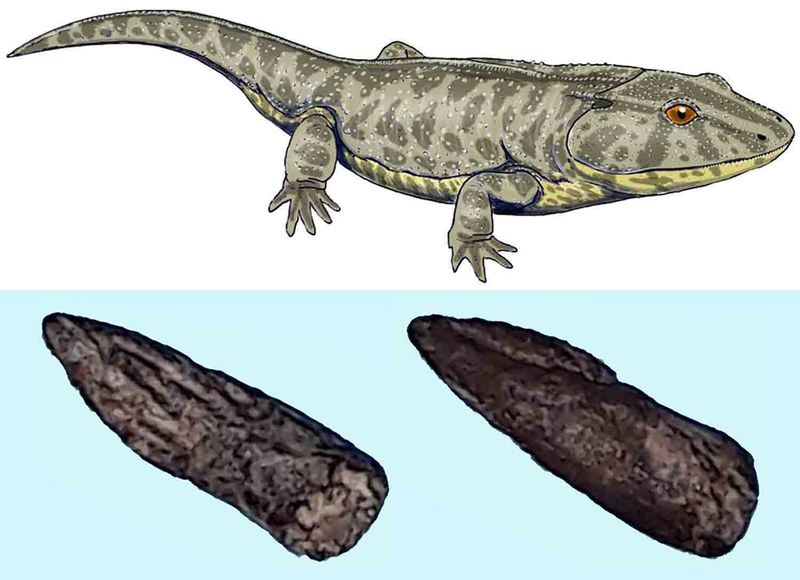
Trimerorhachis insignis was a small, lizard-like amphibian from the Permian period, known for its broad head and short tail. This species thrived in desert environments, showcasing adaptations that allowed it to survive in arid conditions. Its anatomical features suggest a diet of small prey, highlighting its role in the desert ecosystem. Studying Trimerorhachis provides insights into the diverse evolutionary strategies and ecological roles of amphibians. By examining such species, researchers gain valuable knowledge about the adaptability and resilience of amphibians, illustrating their significant contributions to the evolutionary tapestry of life on Earth.
Trematosaurus brauni
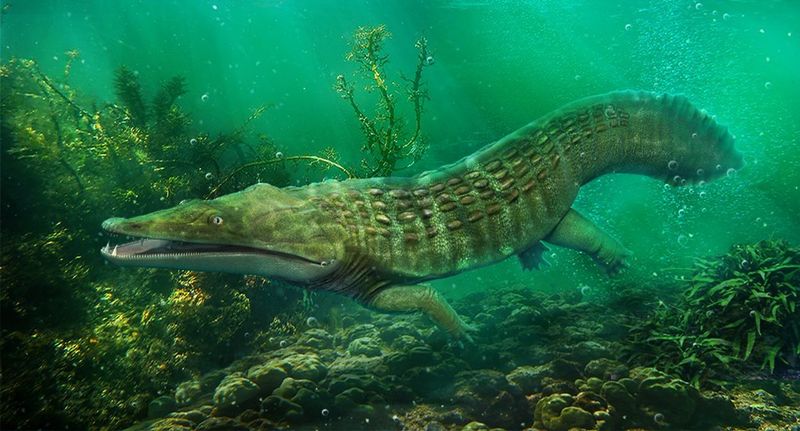
Trematosaurus brauni was an amphibian from the Triassic period, resembling an otter with its streamlined body and strong limbs. Its anatomy suggests adaptations for a life spent largely in water, where it could hunt efficiently. The evolutionary traits of Trematosaurus highlight the diverse niches amphibians have occupied, from rivers to lakes. By studying such species, researchers gain insights into the ecological roles and adaptive strategies that have shaped amphibian evolution. These findings underscore the importance of amphibians in prehistoric ecosystems and contribute to our understanding of their evolutionary legacy.
Zatrachys serratus
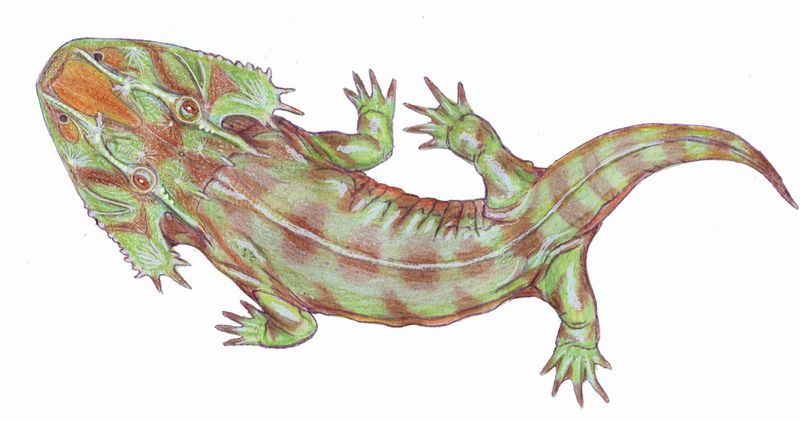
Zatrachys serratus, known for its distinctive serrated skull, was an intriguing amphibian from the Carboniferous period. This species inhabited dense forests, where its unique anatomy likely played a role in its survival and predation strategies. The study of Zatrachys provides insights into the morphological diversity and evolutionary pathways of amphibians. By examining such creatures, researchers can better understand the environmental pressures and adaptations that have influenced amphibian evolution. These findings contribute to our appreciation of the complexity and diversity of life in prehistoric ecosystems, highlighting the remarkable adaptability of amphibians.
Paracyclotosaurus davidi
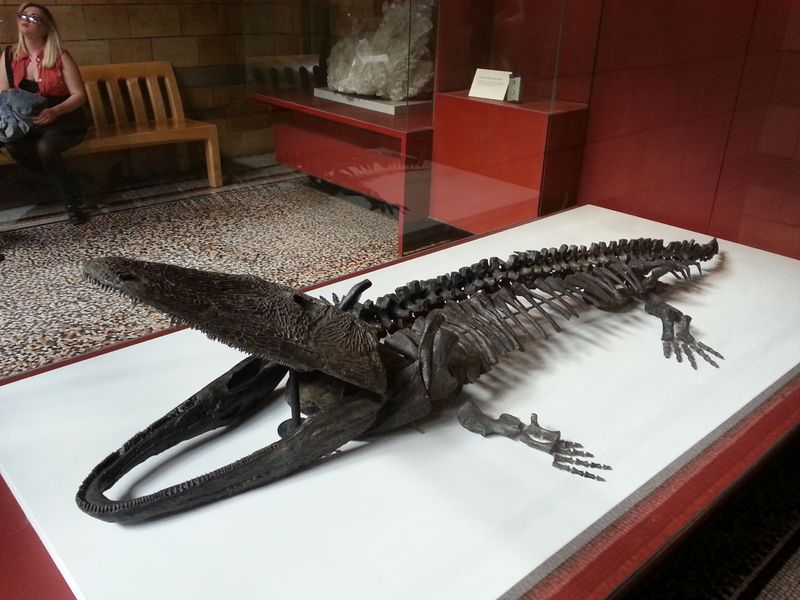
Paracyclotosaurus davidi was a large amphibian from the Triassic period, characterized by its broad head and flat body. This species inhabited lakes in what is now Australia, where it played a vital role in the aquatic ecosystem. Its robust anatomy suggests an adaptation for ambush predation, highlighting the diverse strategies amphibians have employed. By studying Paracyclotosaurus, researchers gain insights into the ecological roles and evolutionary adaptations of amphibians. These findings contribute to our understanding of amphibian diversity and the evolutionary processes that have shaped their development, illustrating their importance in prehistoric ecosystems.
Rhinesuchus whaitsi
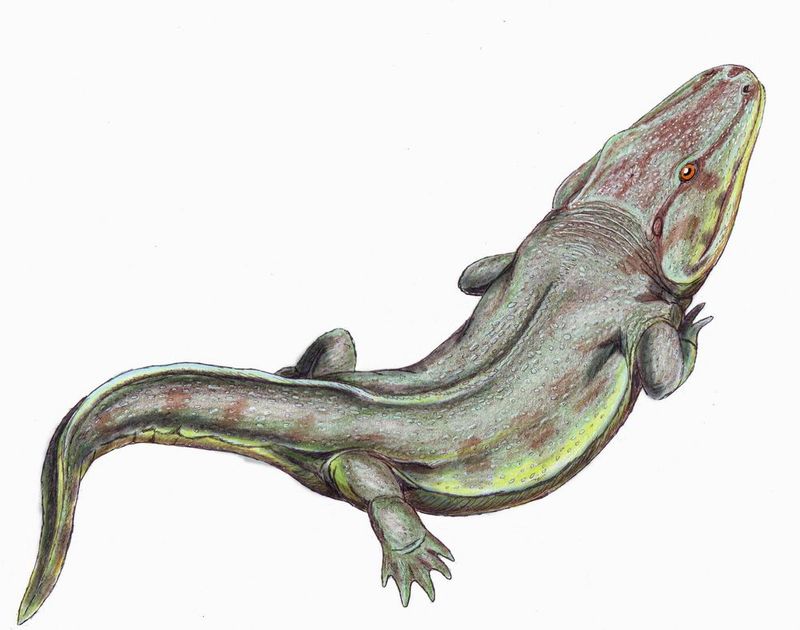
Rhinesuchus whaitsi, from the Permian period, was a medium-sized amphibian with crocodile-like features, including a broad snout and streamlined body. This anatomy suggests adaptations for a riverine lifestyle, where it excelled as a predator. The study of Rhinesuchus provides insights into the convergent evolutionary traits shared between amphibians and reptiles. By examining such species, researchers can better understand the diverse evolutionary pathways amphibians have taken. These findings enrich our knowledge of amphibian diversity and adaptability, highlighting their significant roles in shaping prehistoric ecosystems and the evolutionary history of vertebrates.

